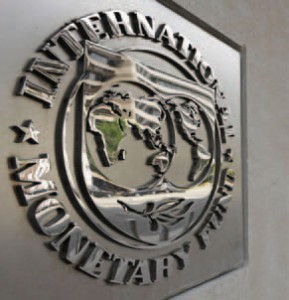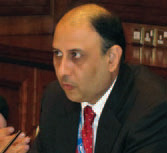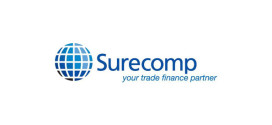MUSHTAK PARKER looks at a unique new fund raising and liquidity option that has been taking MENA by storm
One of the ongoing consequences of the global financial crisis has been a sustained credit crunch in economies all over the world as liquidity remains scarce and financing is targeted at “safe” customers by an over-cautious global financial sector. This, despite several bank bailouts and financial and economic stimulus packages.
The situation has been exacerbated by the on-going eurozone sovereign debt crisis and, in MENA, the contagion of the so-called “Arab Spring”.
The IMF in its latest Article IV Consultation Report on Saudi Arabia 2011, for instance, warns about the financial contagion from the region with the unrest and the economic and political transition leading to large movements in financial markets, including outflows from the region. The volatility in GCC stock markets, especially the dip in the Tadawul Saudi Stock Exchange in early 2011 for instance, is attributed to this contagion.
At that time, Egypt and Bahrain were the key contributors to risk, but now it includes Iran over the nuclear stand-off with the West and the United Nations, which could impact on oil supplies through the Straits of Hormuz especially if the Israelis did decide to launch a pre-emptive strike at Iranian nuclear installations; Syria which is near to political meltdown despite the intervention of UN Special Representative on Syria, Kofi Annan; Yemen which is still seeking a new political dispensation following the reluctant departure of ex-President Saleh; and continuing instability in Iraq.
These factors, according to the IMF, will continue to impact the capital markets and financial flows into and out of the region, irrespective of the price of oil.
For MENA countries, however, apart from funding from multilateral development and financial institutions such as the World Bank Group, including the IMF and the International Finance Corporation (IFC), its private sector funding arm; the Islamic Development Bank Group (IDB) and regional entities; and foreign direct investment (FDI) flows, which in themselves have been impacted by the financial crisis and the Arab Spring, there is a unique new fund raising and liquidity option on the table that has been taking the region and beyond by storm for the last three years since the onset of the crisis in 2008.
In a nutshell, this option is resource, financing, cash management and liquidity mobilisation through the issuance, trading and collateralisation of Sukuk, which are essentially Islamic trust certificates.
Had the nascent Islamic Capital Markets (ICM) been more developed with the requisite legal and regulatory frameworks in place in the MENA countries, Sukuk could have assumed an even greater importance not only in terms of corporate fund raising for working capital and balance sheet purposes; refinancing; cash and investment management; and expansion and project financing, but also for government domestic and external debt requirements; liquidity management of bank reserves and capital requirements; infrastructure financing and even as monetary policy management tools.

However, Ijlal Ahmed Alvi, CEO of the Bahrain-based International Islamic Financial Market (IIFM), however sees the importance of Sukuk in two new areas – its use as collateral and the development of the I’aadat Al Shira’a (the Islamic alternative to REPOs (repurchase contracts), which he contends will play a major role in liquidity management as well as the creation of a more active Sukuk secondary market.
For international Sukuk issuances, the certificates are generally deposited with international custodian banks and payments are settled through Clearstream and Euroclear in Luxembourg. For domestic issuances, this process is done by local institutions.
Here, Alvi suggest the establishment of an international Triparty Agent for the OIC (Organisation of Islamic Cooperation) jurisdictions which would provide Sukuk custodian services and monitor the mark-to-market value of the collateral thus helping to reduce the credit risk of both transacting banks.
He said, “There is a genuine need and interest in the use of Sukuk as a collateral. Since the Islamic finance industry is in need of alternative liquidity management tools, the introduction of a collateralised liquidity management product will not only provide an alternative tool for liquidity management in both domestic and cross-border markets, but it will also help in the better utilisation of Sukuk portfolios of financial institutions.”
The IIFM is also confident that wider use by the market of the proposed I’aadat Al Shira’a will add liquidity in the system in terms of efficient cash funding and liquidity float of Sukuk. It is hoped that both products could be launched by the end of 2012 or in 2013.
In addition, innovation in diversification of Sukuk structures and the use of asset pools is stoking further interest in the Sukuk market. In February this year, the world’s largest Sukuk Programme to date, the RM30.6bn Sukuk Programme issued by PLUS Berhad, the expressway and toll road services utility of Malaysia, even involved a privatisation component.
Similarly, the debut SR500m Sukuk closed by AJIL Financial Services Company CJSC in Saudi Arabia in April, according to CEO Usman Mahmood, was “an innovative off-balance sheet Sukuk based on the sale of Sukuk assets incorporating a credit-wrapped structure. The Sukuk holders will also benefit from a purchase undertaking issued by Gulf International Bank B S C and Riyad Bank, the first time such a credit-enhanced structure has been employed in the Saudi domestic capital markets”.
The Sukuk, which was priced at three month SAIBOR plus 80 basis points with an Issue Price at par, was issued by AJIL Cayman, a limited liability special purpose company incorporated in the Cayman Islands and was jointly lead managed by GIB Capital and Riyad Capital, which also acted as Joint Bookrunners.
At the same time, Khazanah Nasional Berhad, the Malaysian sovereign wealth fund, successfully closed its seven-year benchmark USD357.8m (RM1.09bn) exchangeable Sukuk, which was issued on its behalf through an independent Labuan incorporated special purpose company, Pulai Capital Ltd, and which is the first Sukuk to be priced at negative yield while offering investors (including GCC ones) upside via exposure to China’s impressive economic growth story.
The Sukuk, according to Khazanah, is a convertible debt paper that provides investors exposure to undervalued stock, but with downside protection, exchangeable into the shares of Parkson Retail Group Limited, one of the largest department store operators in Mainland China in which Khazanah has a substantial stake.
By far the biggest Sukuk market in the MENA region, and potentially in the world, is Saudi Arabia. The Kingdom so far has issued around US$6.4bn worth of Sukuk in first quarter 2012 compared with US$1.9bn by UAE corporates, with the largest one being the SR15bn Sukuk by the General Authority for Civil Aviation (GACA), effectively a Saudi quasi-sovereign issue guaranteed by the Ministry of Finance.
The projections are that Sukuk origination in Saudi Arabia in 2012 will be the highest ever and may top US$12bn to US$15bn, followed by the UAE with about US$6bn to US$10bn. Only the Malaysian market is bigger and issuances there currently account for some 60 per cent of the total global issuances.
Global Sukuk issuances in first quarter 2012 have been just under US$50bn compared with US$85bn for the whole of 2011, a record year. Estimates for the global Sukuk market for 2012 range from US$125bn to US$150bn respectively. The problem is that there is much enthusiasm and talk about Sukuk origination, especially in MENA, but in reality the mark-to-market process is very often fraught with policy, legal, regulatory, asset pool quality, lack of trading, Shariah structure issues in addition to market conditions in general. This has tended to dampen and delay actual issuances.
If the Saudi Sukuk market, for instance, had the same level of political, regulatory and origination support from the Saudi government as its Malaysian counterpart enjoys from the government of Prime Minister Mohd Najib Abdul Razak, then the Saudi market could easily overtake the Malaysian one in terms of size and, perhaps, even in terms of number of issuances.
The reasons for the Saudi ascendancy in the global Sukuk market and the rise of a large number of issuers are because of the high level of domestic liquidity; an increasingly diverse investor base; fears over the conventional bond and other asset classes as a result of the subprime and global financial crisis; and a genuine belief that Islamic financial intermediation and Sukuk do offer a more stable alternative fixed-income option than the conventional bond market.
Another important reason why Sukuk is becoming more popular in the Kingdom is because of a shift in the Saudi market from traditional sources of financing such as bank credit to corporate bond and Sukuk issuances.
Saudi banks, too, may not be able to meet local funding requirements from traditional sources given the rapid expansion of infrastructure and projects in the Saudi economy. At the same time, Sukuk price discovery and actual pricing has been extremely competitive and often offers a more cost-efficient and culturally familiar alternative.
So much so that the Saudi Arabian Monetary Agency (SAMA), the central bank, encourages local banks and corporates to go down the Sukuk route because it would like see the local credit market diversified from bank finance to corporate bonds and Sukuk.
Liquidity risk management is as crucial as credit risk management, and this has been well proven during the recent global credit crisis. One of the objectives of asset-liability management (ALM) is liquidity risk management.
Conventional banks have the traditional asset-liability mismatch (ie, they borrow short and lend long) but they have the required platform to manage their maturity gap and cashflow in a relatively efficient manner (they trade instruments between themselves and they have back-up of the central bank as Lender of Last Resort).
In contrast, Islamic financial institutions are faced with operational issues in managing their liquidity effectively. This is because they also have the traditional asset-liability mismatch but their liquidity management tools are not as flexible.
Although Sukuk can be traded, they are mostly held to maturity. It is all very well having entire Sukuk issues oversubscribed, but there has to be an exit route to demonstrate liquidity. And this lack of truly liquid assets has paradoxically increased the demand for liquid instruments.
Sukuk and bond trading on the Saudi Tadawul Stock Exchange for the period 6 March to 16 April 2012 is revealing in this respect. According to the latest Tadawul data, there were only three trades during this period involving a total volume of 300.5 million Bond/Sukuk certificates at a value of a mere SR796 million. In contrast, in Malaysia secondary market trading of Sukuk on the Bursa Malaysia is very active totalling about RM2bn a day.
Even on the London Stock Exchange where there are 43 Sukuk listed there is no information on secondary trading. In reality, the listing, as on the Luxembourg Stock Exchange, the other major international Sukuk listing domicile, is for regulatory purposes and not for market making.

“I am of the view that the most important constraint on the growth of the Islamic capital markets today is the lack of a market or venue in which Sukuk instruments can be traded. It’s an area where more innovation is needed. We haven’t got a yield curve in Sukuk, and we have this market imbalance: we have a very deep and sophisticated Sukuk and capital market in Malaysia, which is in no way repeated in any other country in the world,” explains Neil Miller, global head of Islamic finance, KPMG, Dubai.
The IMF, in its latest Article IV Consultation Report on Saudi Arabia 2011, had a clear message for the Kingdom. “Capital markets are slowly emerging, but important gaps remain. Government debt has been reduced to a very low level and there is no active secondary market nor a robust government yield curve (for bonds or Sukuk). Notwithstanding the government’s current absence of a need for financing, IMF staff noted that maintaining a stable stock of government securities with a range of maturities would help to anchor a yield curve.”
The Saudi Ministry of Finance and SAMA have hitherto dismissed the need for sovereign Saudi Arabia to issue a Sukuk albeit for benchmark purpose even if the Kingdom is not in any need to raise external funding because of a budget surplus due to the sustained high oil prices and, therefore, revenues.
SAMA maintains that corporates had been able to place bonds and Sukuk, and that the absence of an active government debt market did not preclude the emergence of a corporate bond and Sukuk market. In terms of the absence of a secondary market, SAMA notes that this reflected a tendency for banks to buy securities and hold them to maturity as a stable source of income – a reflection of a high level of liquidity usually present in the market.
But there are signs that the beginnings of a yield curve for Sukuk at least is well on its way given the recent GACA Sukuk and the offering from Saudi Electricity Company, and the spate of issuances from originators such as Saudi Basic Industries Corporation (SABIC); Saudi Hollandi Bank; Dar Al Arkaan Real Estate Development Company (DAAR); SATORP, a joint venture between Saudi Aramco and France’s Total; Sipchem; the Al Marai Company and others.
For Sukuk trading to develop further, advises Neil Miller, there is a need for a steady supply of liquid securities with different risk profiles and maturities – in other words more depth and breadth in the market; the emergence of cross-border liquidity framework; greater integration of Islamic financial centres to promote a vibrant secondary market; and a regulatory environment that promotes meaningful disclosure.
He proposes the establishment by the industry of its own bespoke trading platform to facilitate the listing and subsequent trading of a wide universe of Sukuk and other Shariah-compliant instruments. “We need to have an independent platform or exchange that is a venue for the trading of Sukuk and Islamic capital market papers. Most importantly, we need to make sure this is something that investors, whether they are resident or non resident can access. You need to have buyers and sellers confidence that they can buy this paper and hold it safely. If we have our own platform we could have a regulatory listing and be very clear about the basis upon which an instrument has been listed and whether it is tradable.”
A major driver of Sukuk issuance in Saudi Arabia in 2012 could be the country’s infrastructure spend. In a recent report, Standard Chartered Bank projected that government spending on non-oil infrastructure projects is likely to be seven per cent higher than last year. The 2012 budget allocates $45bn for new infrastructure, including schools to the education sector; $23.1bn to healthcare, including 17 new hospitals; $9.4bn for transport projects, including the expansion of a number of the country’s airports; and the construction of close to 4,000km of roads.
Standard Chartered Bank estimates that Saudi Arabia’s share of a total potential pipeline of $172bn worth of projects in the GCC is around $61bn this year.
But as the GACA director general, Prince Fahd bin Abdullah bin Mohammed al-Saud, emphasised at the time of the debut SR15bn GACA Sukuk offering, whose proceeds are being used to part finance the construction of the SR27.1bn ($7.23bn) new King Abdul Aziz International Airport in Jeddah, “this will be the first batch of Sukuk, which will be followed by other issues. By issuing these Sukuk, the government intends to open new channels of investment and saving and provide economically viable projects to the private sector”.
One major player other than sovereign Saudi Arabia and Malaysia that could effect the global and MENA Sukuk market is the Islamic Development Bank Group (IDB), the multi-lateral development bank of the Muslim world.
At the 37th Annual Meeting of the Board of Governors of the IDB (held in Khartoum, in April) member countries lined up to urge the multilateral to adopt a much more aggressive resource mobilisation strategy in order to deliver its strategic objectives, which include promoting intra-Islamic trade; reducing poverty; promoting the private sector and the role of women in development; and promoting economic growth in member countries.
While some members of the IDB are basking in fiscal euphoria due to high oil prices and revenues, others (the majority) are suffering due to burgeoning fiscal deficits and shortages.
The good news is that the IDB is under pressure from its board of executive Directors to devise a financing strategy for the next three, five and 10 years. In the aftermath of the financial crisis, the IDB board decided on a 30 per cent increase per annum in the bank’s financing for the next three years, a target which the bank’s management considers very ambitious.
In addition, the IDB is also under pressure to raise funds from the capital markets more frequently to leverage its AAA rating rather than rely too much on equity and callable capital from shareholders.
In a recent interview, IDB president Dr Ahmed Mohammed Ali confirmed that “for the viability of the institution we have to do both. In addition to the Sukuk programme, we will raise some funds from callable capital; after that, we also probably need to request additional capital”.
The Sukuk Programme has raised much of the interest. The IDB’s current Sukuk Programme of $3.5bn is almost exhausted. To date, the MDB has issued five Sukuk totalling $3bn, leaving a mere $500m of issuances left. Dr Ali confirmed that the Bank will launch a new Sukuk programme “probably in the same region of $3.5bn”.
The only difference is the urgency of the new programme. “We want to be in the market every year. This is very important for the future for the bank to have the ability to raise resources regularly from the market. In the past we did not give enough attention to that. Perhaps this is because we did not need as much resources, so we did not go to the market regularly,” explained Dr Ali.
The reason for this is that, contrary to popular belief, the IDB raises its funding from the markets at a more expensive rate than peer multi-laterals. This despite its AAA rating from the three major international credit rating agencies and its Zero Risk Waiting for multi-laterals from the Bank of International Settlements in Basel.
“We hope that the IDB Group will review its pricing policy as well as the financing conditions and procedures so that they can be more competitive with those of other financing institutions. Here lies the importance of the bank using its excellent AAA rating to mobilise resources from the international market at competitive rates in order to contribute to lowering the cost of financing projects in member countries. The mobilisation should be done in a more widespread manner, while the bank should limit its reliance on member countries to boost its capital,” emphasised Saudi Arabia’s Governor to the IDB.
In Khartoum, Dr Ahmed Mohammed Ali could not go into greater detail about the current state of the bank’s new resource mobilisation strategy especially the new Sukuk Programme, suffice to emphasise that “the board of executive directors is currently studying the various ways and means for increasing the bank’s resources, including the ways and means of implementing the previous resolutions of the board of governors regarding the capital increase.
Their options give priority to mobilising financial resources from new sources, such sovereign funds, and Sukuk programmes to attract non-traditional financiers to invest in economic growth programmes”.
Riyadh is also keen on the IDB to focus on financial leverage not only in terms of the bank’s resources, but also through its financed projects, by promoting these projects at peer financing institutions to encourage joint financing.
Sukuk is not only an attractive option for Islamic banks or conventional banks in the MENA region. Global financial institutions are also getting into the act. Late last year Goldman Sachs announced plans to issue a $1bn Murabaha Sukuk Programme, of which the first tranche is imminent.
In April, HSBC Saudi Arabia successfully closed the first private placement of a 5-year SR1.5bn ($400m) Sukuk issue for its affiliate, the Saudi British Bank (SABB). According to HSBC, it is the first subordinated Tier II Sukuk transaction that comes in line with the Basel III transitional arrangement requirements in the region.
As part of the issue, SABB has offered investors in its senior 2008 SR1.7bn notes the options to buy all or parts of their notes if they wished to participate in the new Sukuk issue, which was priced at 120 basis points over 3 months SAIBOR.
 Cash And Trade Magazine For Cash and Trade professionals in the Middle East
Cash And Trade Magazine For Cash and Trade professionals in the Middle East





One comment